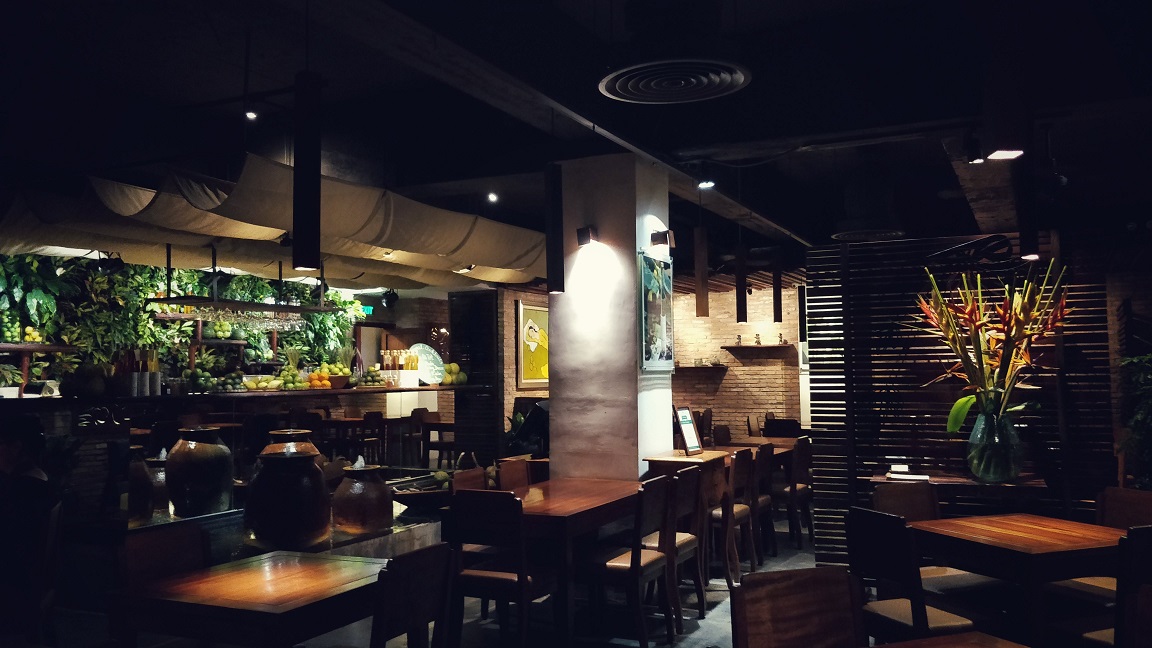Romantic Restaurants Islamabad: Suitable Dining Locations for Couples
Romantic Restaurants Islamabad: Suitable Dining Locations for Couples
Blog Article
Savor Genuine Eastern Food With a Pan-Asian Spin for a Cooking Journey
Getting started on a cooking trip via genuine Asian cuisine, improved with a Pan-Asian twist, provides a distinct opportunity to check out the abundant tapestry of flavors that define the region's diverse cooking customs. This experience welcomes you to appreciate the splendid balance of preferences-- sweet, salty, spicy, and sour-- harmonized by fragrant herbs and seasonings. Think of the innovative combination of Thai curry and ramen or the unexpected joy of sushi burritos. As you contemplate these luring dishes, think about the cultural narratives and historic impacts that shape them, each bite supplying a tale waiting to be discovered.

Checking Out Pan-Asian Flavors
In the realm of worldwide gastronomy, Pan-Asian food stands out for its impressive diversity and the harmonious interaction of flavors from various Eastern cultures. This culinary strategy commemorates the one-of-a-kind active ingredients and rich customs located throughout the continent, creating a tapestry of preferences that is both gratifying and intriguing. Secret to Pan-Asian food is its ability to balance contrasting flavors-- sweet, salted, spicy, and sour-- while highlighting the freshness and high quality of each ingredient.
From the umami-rich soy sauce of Japan to the intense chili peppers of Thailand, Pan-Asian food uses a considerable combination of tastes. These elements are typically integrated in inventive ways, boosting meals with layers of complexity. For circumstances, making use of aromatic natural herbs such as lemongrass and cilantro, usual in Vietnamese and Thai cuisine, includes a rejuvenating brightness to recipes, while the consolidation of coconut milk delivers a luscious, rich appearance.
The emphasis on fresh produce and aromatic flavors ensures that each dish is not just a banquet for the taste yet also for the senses. Pan-Asian food welcomes diners to embark on a culinary trip, discovering the substantial and varied landscapes of Oriental gastronomy with every bite.
Blend Recipes to Try
While Pan-Asian food is commemorated for its traditional tastes, the contemporary culinary landscape is increasingly embracing blend recipes that blend these classic aspects with influences from various other regions. This cutting-edge approach not just honors the abundant heritage of Asian cooking arts yet also introduces unique preference experiences that appeal to modern tastes.
A prime example of such a fusion recipe is the Korean-Mexican taco, where seasoned bulgogi beef is covered in a warm tortilla, topped with kimchi and a hot gochujang-infused salsa. This combination marries the strong, mouthwatering flavors of Korea with the dynamic, fresh elements of Mexican food. Likewise, sushi burritos have gotten appeal, joining together the delicate artistry of Japanese sushi with the hearty, hand-held benefit of a burrito, frequently including fusion active ingredients like tempura shrimp and avocado with a drizzle of wasabi mayo.
An additional notable meal is Thai curry ramen, which infuses the luscious, aromatic spices of Thai curry right into the calming broth of typical Japanese ramen, producing a harmonious blend that entices the detects. These combination recipes extend beyond plain novelty; they stand for a cooking discussion between societies, motivating expedition and innovation worldwide of Pan-Asian cuisine.
Vital Components and Flavors
To truly value Pan-Asian food, one must recognize the necessary active ingredients and flavors that create its foundation. This varied cooking style draws from a rich tapestry of Asian practices, employing an unified mix of textures and tastes.
Aromatic elements are essential, with garlic, lemongrass, and ginger being ubiquitous throughout different Pan-Asian recipes. These components give an aromatic base that improves the intricacy of flavors. Spices such as star anise, Website cardamom, and cinnamon introduce warmth and character, resembling impacts from regions like China and India.

Food Preparation Strategies and Tips
Grasping the art of Pan-Asian cuisine needs knowledge with its unique cooking methods, each adding to the vivid tapestry of flavors this cooking tradition is commemorated for. Central to these techniques is the stir-fry, a quick food preparation strategy that protects the dietary integrity and vivid colors of ingredients. Utilizing a frying pan, the stir-fry method permits for also heat circulation, essential for accomplishing the particular appearance and flavor equilibrium of Pan-Asian recipes.
One more basic method is steaming, specifically prevalent in Chinese food. This gentle method preserves the natural flavors and nutrients of ingredients, making it excellent for seafood and veggies. Dumplings, a precious staple, commonly benefit from steaming, resulting in soft, delicious appearances.
Barbecuing, likewise integral, imparts smoky midsts to recipes such as Oriental bulgogi or Japanese yakitori (asian fusion restaurant). This strategy commonly involves seasoning active ingredients, permitting flavors to permeate deeply prior to cooking over an open flame or warmer
Finally, grasping the art of balancing flavors-- sweet, sour, salted, bitter, and umami-- is crucial. Effectively layering these aspects can raise a meal from normal to phenomenal, supplying a facility and pleasing culinary experience that symbolizes the essence matsuri of Pan-Asian cuisine.
Dining Experiences Worldwide
Around the world, Pan-Asian cuisine uses an unmatched eating experience, commemorated for its rich tapestry of flavors and dynamic discussions. This cooking phenomenon has actually gone beyond cultural borders, catching the hearts and palates of food enthusiasts worldwide. In worldwide cities like New York, London, and Sydney, Pan-Asian dining establishments act as fusions where cooking practices from Thailand, Japan, China, and beyond merge, providing restaurants with a diverse mix of recipes that highlight the area's diversity.
The international allure of Pan-Asian food depends on its capability to supply both credibility and technology. Cooks skillfully wed traditional active ingredients such as lemongrass, soy sauce, and miso with contemporary strategies, causing dishes that are both refreshingly brand-new and familiar. This combination permits diners to start a culinary journey that values heritage while embracing modernity.
Additionally, dining experiences are elevated with thoughtfully designed atmospheres that mirror the principles of Pan-Asian visual appeals. From minimalist Japanese-inspired insides to lively Thai-themed rooms, each restaurant uses an one-of-a-kind setting that enhances the cooking offerings. Because of this, patrons are not just consuming a dish yet partaking in a cultural experience, making Pan-Asian eating a really worldwide phenomenon.
Final Thought
The exploration of Pan-Asian cuisine uses a profound understanding of the elaborate interplay of tastes and cooking traditions across Asia. By accepting blend dishes such as Thai curry ramen and sushi burritos, the cooking trip not only highlights the versatility of standard components however also showcases ingenious modern techniques. This gastronomic adventure, improved by cooking techniques and essential seasonings, gives an unique opportunity to appreciate the multiculturalism and culinary creativity that specify Pan-Asian cuisine on an international range.
Embarking on a cooking trip via authentic Eastern cuisine, enhanced you could try these out with a Pan-Asian twist, offers an one-of-a-kind chance to check out the rich tapestry of tastes that specify the region's varied culinary customs.In the world of global gastronomy, Pan-Asian cuisine stands out for its remarkable diversity and the harmonious interplay of flavors from different Oriental societies. Key to Pan-Asian food is its ability to balance contrasting tastes-- wonderful, salty, spicy, and sour-- while highlighting the freshness and quality of each active ingredient.

Report this page